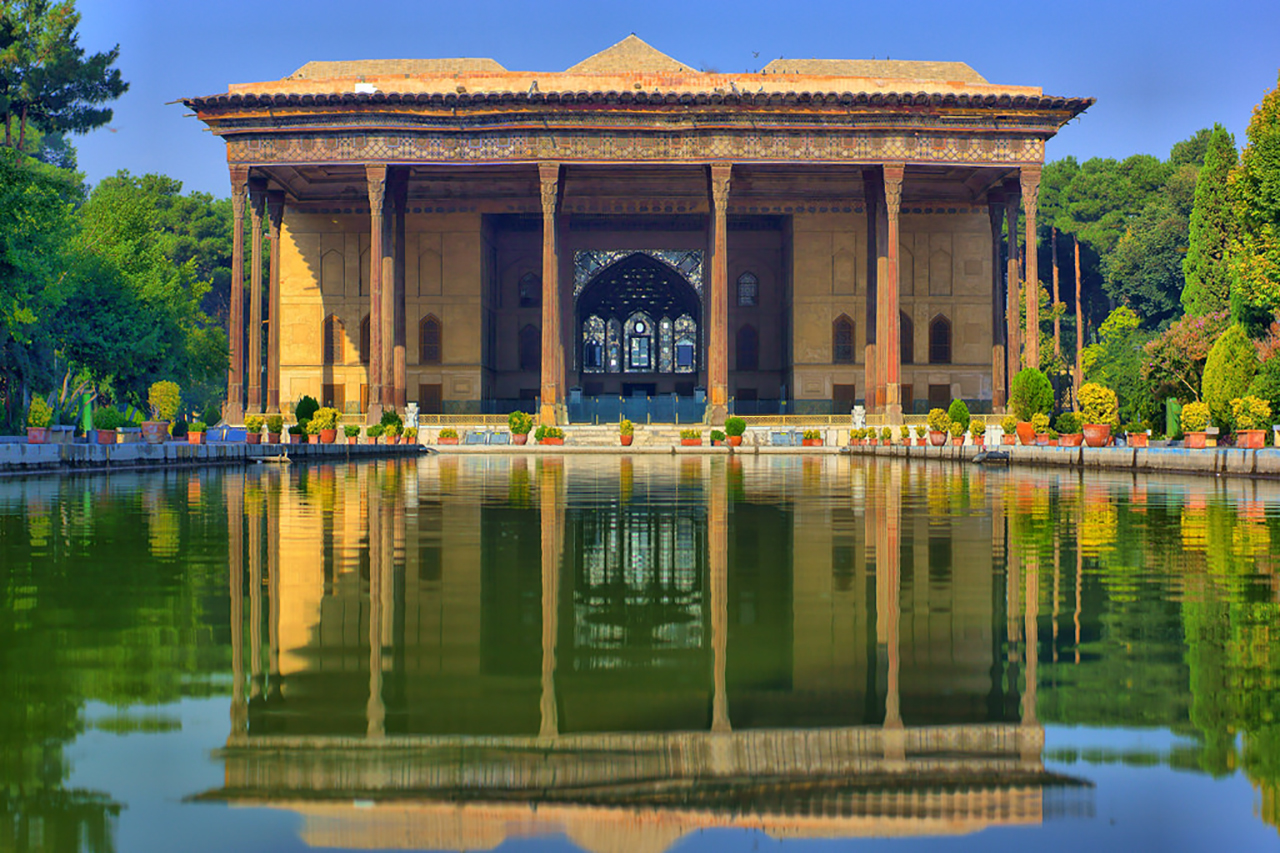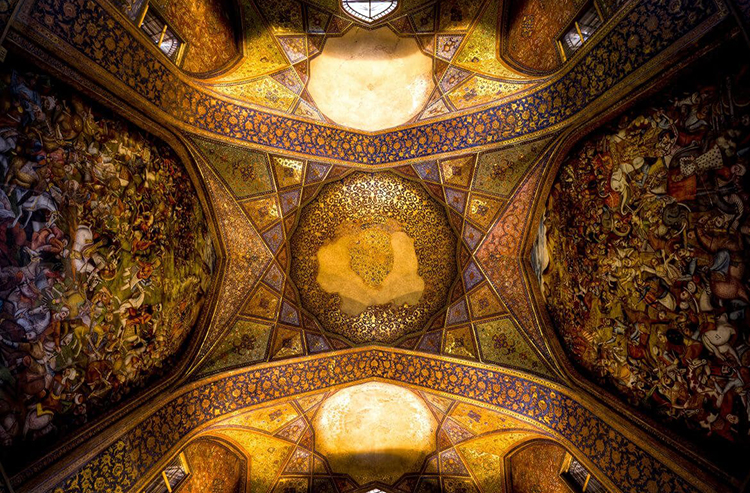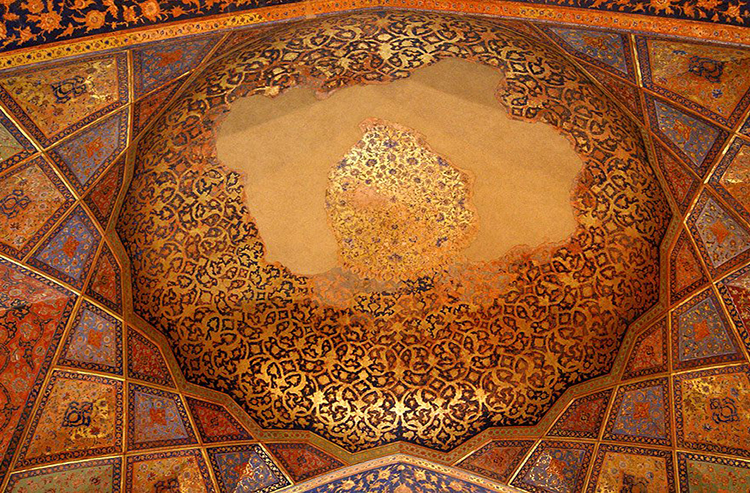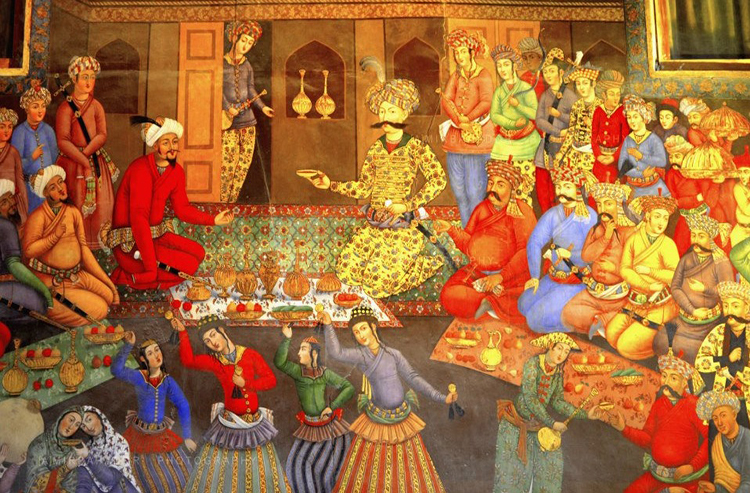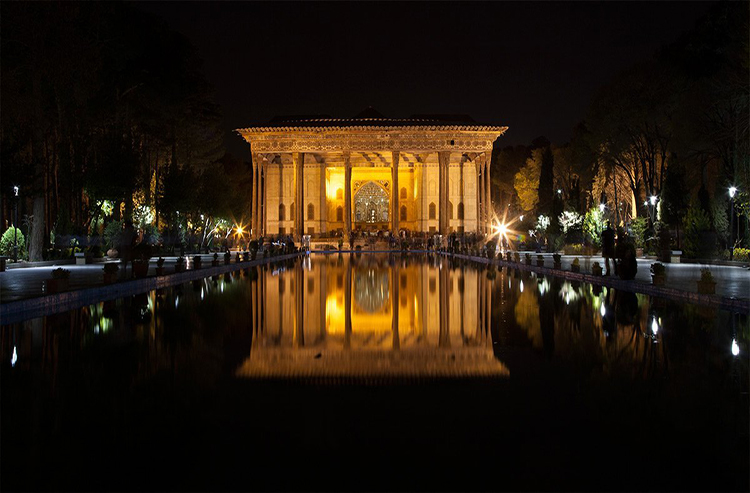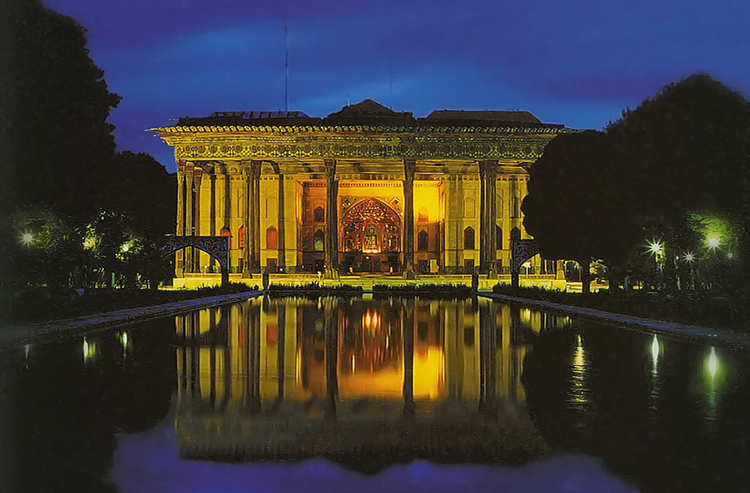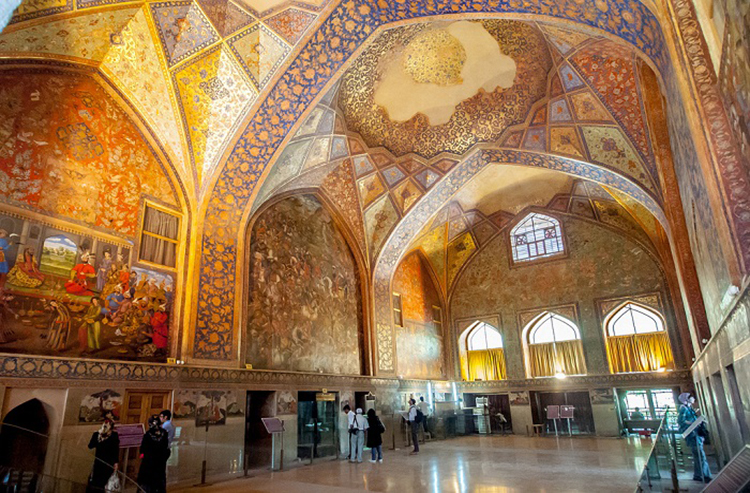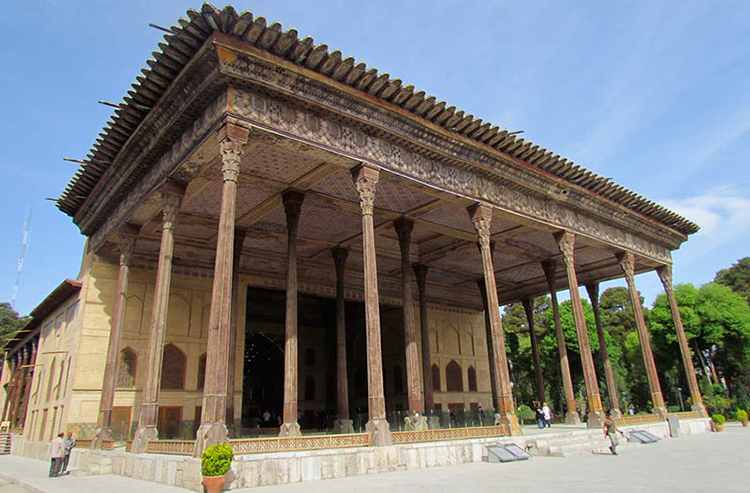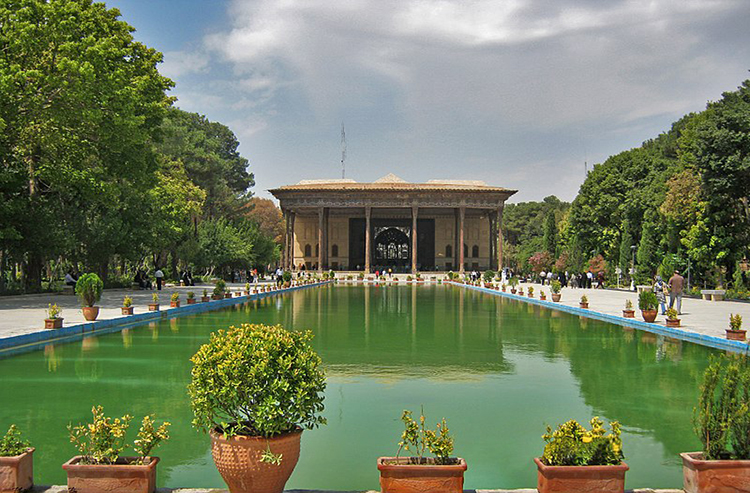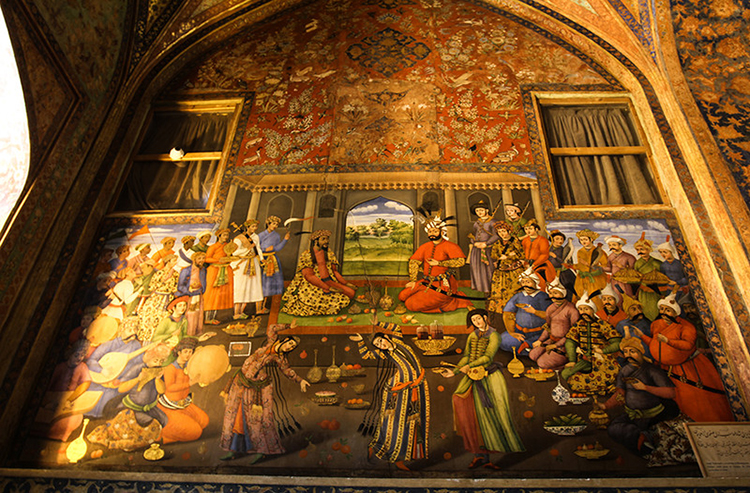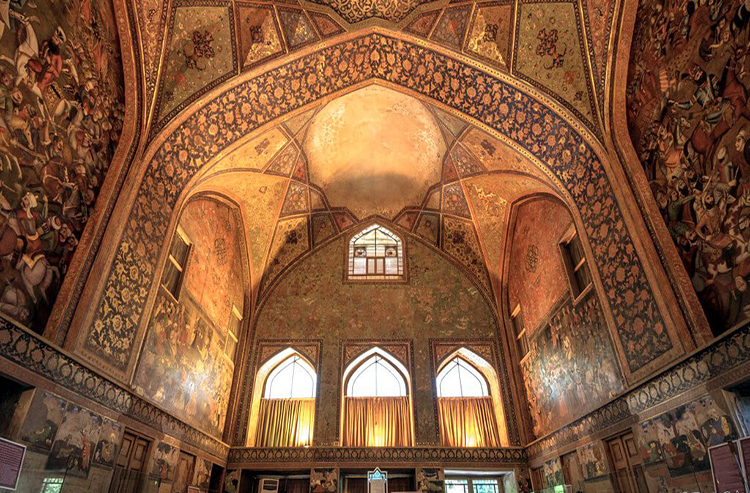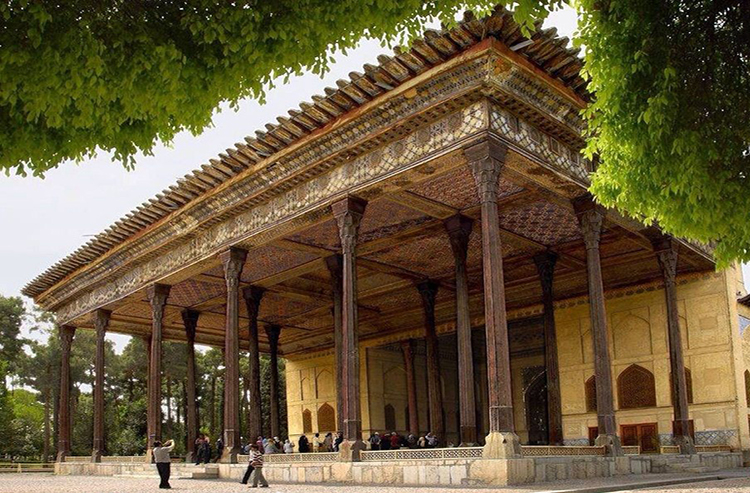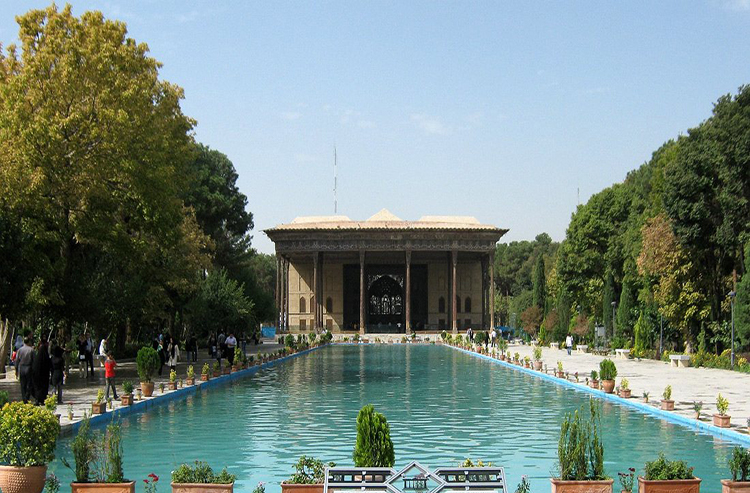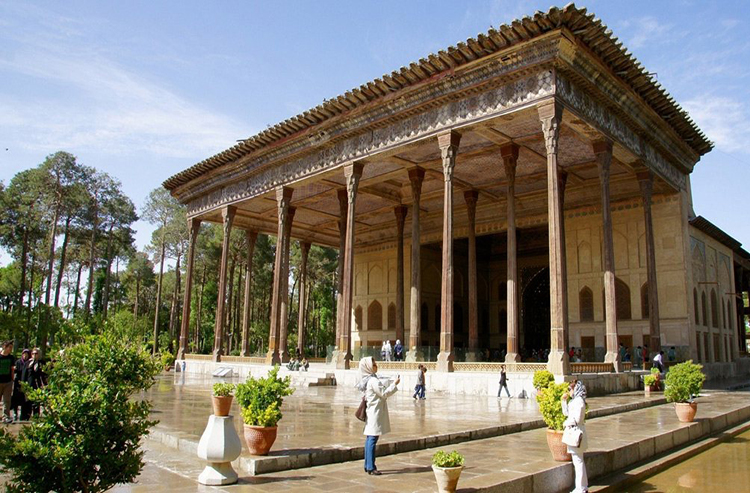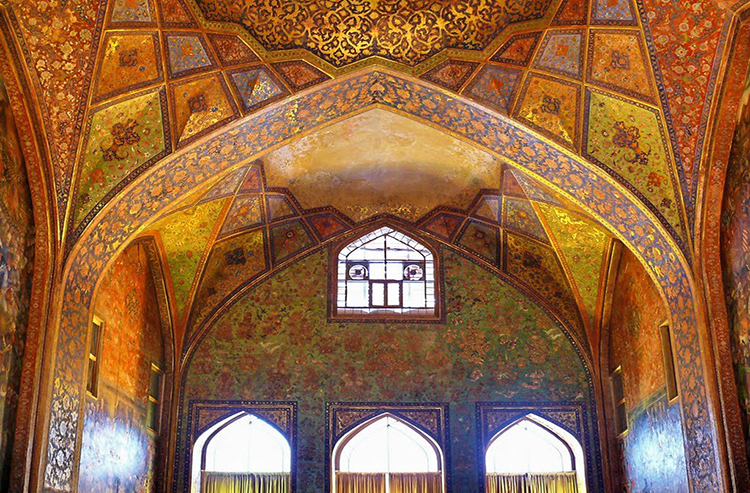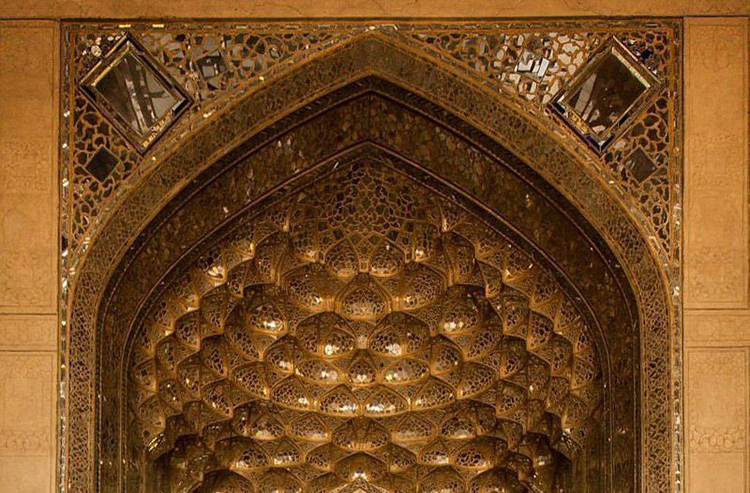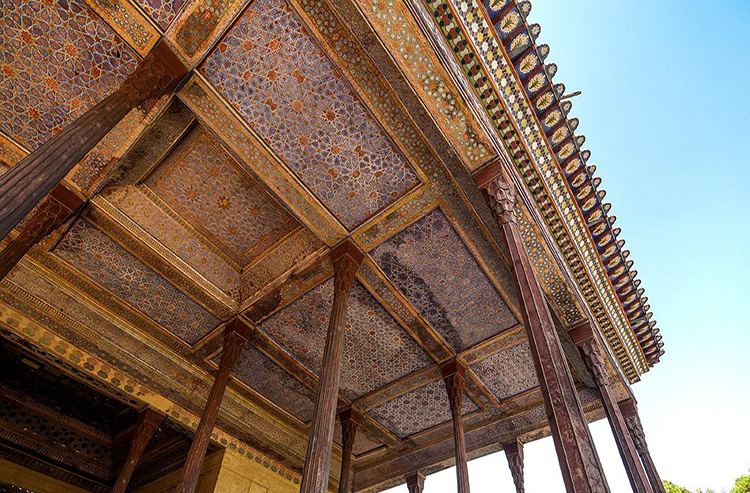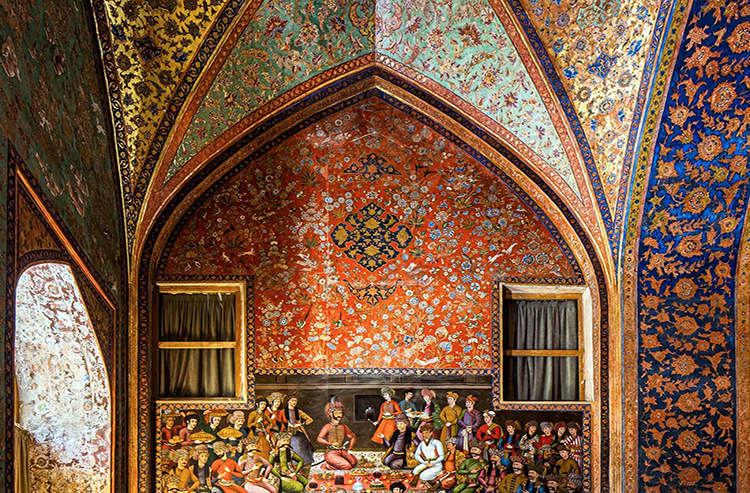Chehel Sotoun Palace
History of Chehel Sotoun Palace
Chehel Sotoun is a mansion in the heart of a garden constructed by Shah Abbas II for receptions and amusements. Ambassadors and dignitaries from other countries were received in here by the Safavid King of Iran inside its reception halls. The twenty slender columns out of wood which support the entrance mansion whose shadows are reflected inside the water and seem to make up the sum of Forty Columns. This palace embraces many paintings, frescoes and ceramic panels depicting historical scenes such as the Battle of Chaldiran, the reception of Uzbek King right after the completion of the palace and so on. There are also pictures of celebrations of joy and love in traditional Persian miniature styles.
The construction and establishment of this admirable palace date back to Safavid Era in 1588. However, no sooner than 1647 was it fully completed. The initial plan of this garden and monument was designed when Shah Abbas, the first king of Safavid Empire, opted Isfahan as the capital city. He decides to build up a long street, calling it Chahar Bagh (the four gardens), and develop some gardens in it. Unfortunately, except for Chehel Sotoun Garden and Hasht Behesht Garden, none of these gardens have remained. The immense halls of this palace used to be the selected places for official feasts of the country. After his reign was over, Shah Abbas II made a considerable attempt to perfect this masterpiece. Chehel Sotoun Palace was registered on UNESCO Cultural Heritage list in 2011.
Structure of Chehel Sotoun Palace
The land of Chehel Sotoun Palace is 67000 square meters. Its design was inspired by Chinese, Iranian, and European architecture. Before entering the palace, there is a veranda with 20 cypress wood columns. Nevertheless, as the name Chehel Sotoun suggests, there have to be 40 columns. The reflection of the 20 real columns on the water of the pool, creates the illusion that there are 40 columns. It is worth mentioning that the number 40 in Iran signifies the multiplicity in general. Therefore, we can conclude that there was a great contemplation behind building such an amazing structure. Moreover, the doors and windows are all decorated with fretworks and cachet designs. In addition, the central hall of the palace includes some glamorous paintings on the walls that each refers to a special event on a specific period of time. All these elements are representative of the proficiency of the skillful Iranian masters and architectures.
